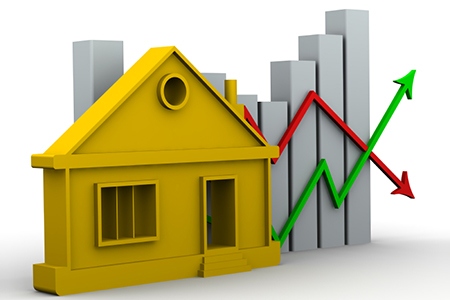The National Association of REALTORS® (NAR) Power Broker Roundtable this month discusses the trajectory of the housing market so far this year, and what lies ahead for the remainder of 2017.
Moderator:
Robert Bailey, Broker/Owner, Bailey Properties, Santa Cruz, Calif.; Liaison for Large Residential Firms Relations, NAR
Panelists:
Rei Mesa, President/CEO, Berkshire Hathaway Home Services Florida Realty, Miami/Fort Lauderdale, Fla.
Michael Zagaris, President/CEO, TMZ Real Estate, Modesto, Calif.
June Slusser, Equity Partner, Coldwell Banker High Country Realty, Atlanta/Blue Ridge, Ga.
Robert Bailey: Some of the best news of the spring season may be that existing-home sales jumped 4.4 percent in March and are up nearly 6 percent compared to a year ago. According to NAR Chief Economist Lawrence Yun, the March data surpasses January 2017 as the strongest month of sales since February 2007. In a real estate environment struggling with low inventory in most areas, that’s reason enough for optimism. We thought this might be a good time to check in with a few seasoned pros from various regions to get their take on the view from mid-year as we head into the summer selling season. Rei, you’re in high-demand Southeast Florida. How do you see the year shaping up?
Rei Mesa: We’re fortunate to be in a sought-out region—a coastal area, still relatively affordable, and in a state with no income taxes—and while I don’t pretend to have a crystal ball, I can tell you we are in the midst of a very strong selling season. Inventory is growing in the luxury market, although less so at the entry level, where investors scooped up rental properties during the downturn and haven’t put those homes back on the market. But our agents are motivated, reaching out to sellers, and while we may not have a break-out season, it should be a good year for us overall.
Michael Zagaris: We’re a bit inland from the California coast, in a more moderate market, but it’s been a good spring season for us as well—a modest rise in prices, busy open houses, and more than a few multiple offers, especially at the higher end. The problem, for us as for many others, is the tight inventory—and that’s not being helped by lower than historic levels of new construction. There just aren’t enough homes on the market. The name of the game is business development.
June Slusser: Business is brisk in the Blue Ridge Mountain high country. We’re at 20 percent over the same quarter last year, and demand remains high in our second-home area, especially for properties with lake and mountain views. Georgia has become a mecca for filmmaking, so we have increased interest from movie people—and any desirable location within 100 miles of a major metropolitan area will always attract interest from boomers. Our Chamber of Commerce does a great job of marketing, so while inventory is tight, and some prices are rising dramatically, our view from mid-year is encouraging.
RB: You’ve all referred to the shortage of inventory. How do we turn that around? What’s the message you’re sending to agents, and where do you see opportunity?
MZ: A good agent will do well in any market, but the central message to our agents today is to get out there and list. Life changes will always prompt a family’s need to move, so it’s time to do some good old-fashioned farming. At the same time, there’s something of a mismatch between what potential sellers want and what may be available to them if they sell—so as I see it, there’s great opportunity in new construction. In our area, which has great appeal and amenities for seniors, there’s especially a need for senior housing. Hopefully, builders will respond.
JS: Today’s buyers have different needs and wants in a home than their parents did. But we’re finding that most buyers are amenable to renovating, so even older properties are selling well. Still, we do see a need for more housing. New construction is just beginning in our area, but it’s not keeping pace with demand.
RM: I think it’s important for agents to be inventive, to educate sellers with plenty of equity that this is a good time to move up. But they do need to have choices. There are four million investor-owned properties in Florida that are not turning over because landlords are finding them profitable. New construction is certainly one answer. We need developers to step up to the plate.
RB: So, among the three of you, there seems to be consensus that if 2017 is not an exceptional year, it will be better than some expected. If we are able to ease the inventory crunch, it could turn out even stronger.
JS: I’d say so, yes. There’s plenty of opportunity, and the U.S. economic outlook, by most indicators, is fairly healthy. With effort and a push to list and build, we could be looking at some banner years ahead.
For more information, please visit www.nar.realtor.
For the latest real estate news and trends, bookmark RISMedia.com.











